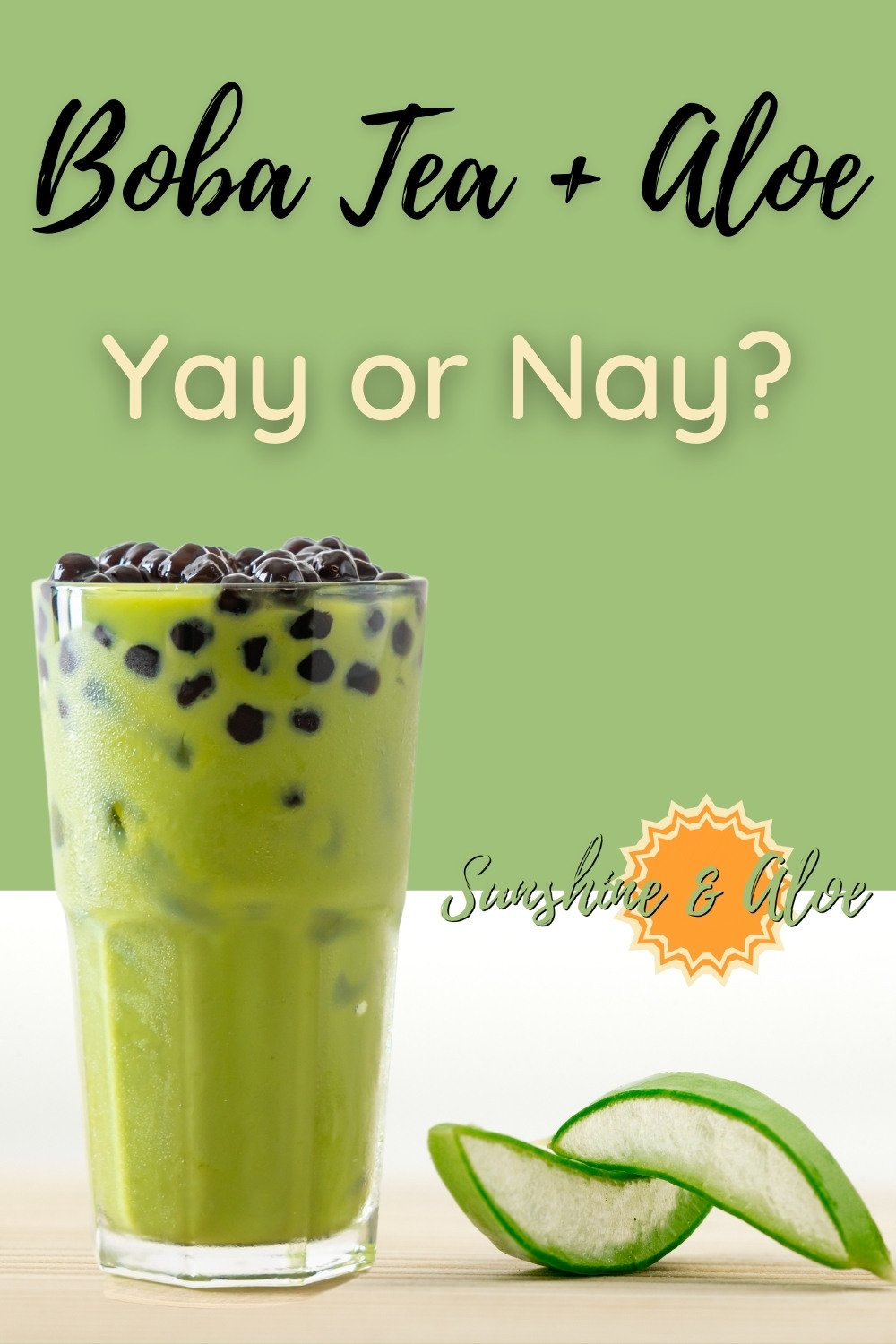How to Use Aloe Vera Jelly in Boba Tea
Calling all exotic tea fans! Did you know you can add aloe vera jelly to boba tea? It’s a way to boost your tea with healthy vitamins, minerals, fatty acids, and other nutrients.
Before we go any further, I have a confession: I’m not a huge fan of boba.
I love tea. But chewy blobs in my tea? That’s just weird.
So if you’re like me and you don’t care for tapioca pearls, adding aloe chunks is a good alternative topping for your bubble tea. (As strange as it sounds.)
Read on to see if aloe bubble tea is right up your alley!
What is Boba Tea?
First, if you’re new to the whole concept of boba tea, you should definitely try it. Boba tea is a type of bubble tea, which originated from Taiwan. It is usually sweetened with milk and sugar and served iced.
Photo by Frank Zhang on Unsplash
Rather than being your typical tea, boba tea contains tapioca pearls, more commonly known as boba. These starchy pearls are chewy and jelly-like. Usually boba tea comes with a wide straw, so you can suck the pearls through the straw and chew on them while drinking your tea.
But, tapioca pearls aren’t the only garnish option when it comes to drinking boba tea. Some boba teas contain jelly-like pearls made from fruit juice, or other fruit-related toppings.
Health Benefits of Adding Aloe to Boba Tea
While tea alone is very healthy, and contains polyphenols that act as antioxidants, boba tea is another story. Between the added sugar, milk, and tapioca pearls, the drink is stuffed with calories.
As dietician Emily Iuzzulino explained in a recent article, “the tapioca balls in the beverage, sweet and chewy though they may be, have no nutritional value, and are basically just empty calories, carbs and sugar.” Sorry to rain on your parade!
Using fruit pearls in your boba tea is no better, as these are usually sweetened as well. But swapping out the boba pearls for aloe vera jelly is a great way to lower the calorie content in your boba tea.
Beyond that, aloe vera jelly has many healing properties. Consuming aloe vera can help improve digestion and reduce intestinal inflammation.
If you enjoy having texture to your tea, but you are looking for a healthier alternative to traditional boba, adding aloe vera jelly to your tea is the way to go.
How to Make Your Own Aloe Jelly
Although some bubble tea shops now offer aloe vera jelly as a boba tea topping, the best way to try aloe vera boba tea is to make your own.
Making your own aloe jelly is super simple. All you need are some aloe vera leaves, which you can buy online or in some grocery stores.
Wash off your aloe vera leaf, and leave it soaking in water for a while in order to rinse out the yellow latex, or aloin. The water will turn slightly yellow due to the aloin in the water. You may want to soak your leaf for a while, rinse it off, then soak it again until the water is clear and free of aloin.
Next, peel or cut off the spiny edges of the leaf and cut the leaf in half. Carefully peel away the skin with your knife. This process can get tedious, since you don’t want to accidentally eat any skin, but you don’t want to accidentally discard any aloe either.
With the hard part done, you will find that the interior of the aloe vera leaf is slimy and jelly-like. All you have to do is rinse it off and start dicing the jelly-like flesh into little chunks for your bubble tea.
The jelly does not keep its shape for very long, so it is best to cut the aloe fresh for your boba tea. Click here for a more detailed recipe on making your own aloe vera jelly.
Is Aloe Boba Tea Actually Good?
Ok, I’ll admit that adding aloe jelly to your tea sounds healthy and refreshing, but is it actually good? Boba tea-lovers seem to be split over this question. Some find aloe vera jelly to be a refreshing topping. But not all boba connoisseurs find aloe jelly tasty. According to one, “the aftertaste is bitter and the chunks just kind of feel like biting into a watermelon that’s been pickled.” Not exactly a five-start review!
Personally, I don’t think aloe vera tastes all that good. The good news is that, when chopped up into small pieces and mixed with tea, it doesn’t taste like much.
Still, aloe vera jelly definitely goes better with non-milky boba teas, or boba teas with fruity flavors. So I wouldn’t go putting aloe jelly in a milk-based boba tea.
You might not like aloe vera jelly, but there is no way to know until you try it! Give it a shot, and see what you think.




